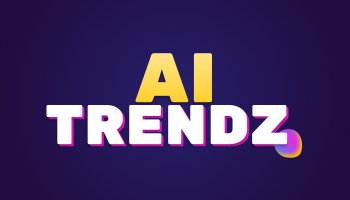SaaS is changing the game for businesses with its affordability, flexibility, and scalability. Learn more about SaaS in this article.

SaaS products and services are on the rise, and it’s important not to ignore them. In recent years, SaaS has become increasingly popular due to its affordability, flexibility, and scalability. In this article, we’ll explore what SaaS is, some examples of SaaS products and services, and how to utilize them.
What is Software as a Service?
Software as a Service (SaaS) is a relatively new software delivery model that has gained immense popularity over the past decade. As businesses become increasingly reliant on digital solutions for their day-to-day operations, SaaS has emerged as a cost-effective, flexible, and scalable way to meet those needs.
Also read: TOP 5 AI startups in 2023 (part 1)
With SaaS, customers no longer need to worry about purchasing and installing software on their own computers or servers, as the software is hosted and maintained by third-party providers. That is a total game-changer! Ordinary people can access complex and expensive software easily and quickly thanks to the rise of this technology sphere.
One of the most significant benefits of SaaS is its affordability. With traditional software models, businesses would typically need to purchase software licenses upfront, which could be prohibitively expensive, especially for small or medium-sized businesses.

With SaaS, however, customers pay for the software on a subscription basis, spreading out the costs over time and making it more manageable. This also eliminates the need for businesses to invest in expensive hardware or infrastructure to run the software, further reducing costs.
Another key advantage of SaaS is its flexibility. Since the software is hosted and maintained by third-party providers, customers can access it from anywhere with an internet connection. This means that businesses can easily scale up or down their usage of the software as needed, without having to worry about purchasing additional licenses or hardware.
Additionally, since the software is accessible via web browsers or apps, it can be used on a wide range of devices, including laptops, smartphones, and tablets, giving users more flexibility in how they work. Perhaps the most significant advantage of SaaS is its scalability.
Stanford students developed AR glasses that allow you talk to ChatGPT in real time 🤯 #ai #artificialintelligence #ar #chatgpt pic.twitter.com/O0WwgxlIlb
— AI Trendz (@AiTrendz) April 12, 2023
As businesses grow and evolve, their software needs often change as well. With traditional software models, businesses would need to purchase new licenses or hardware to meet those needs, which could be time-consuming and expensive. YOU are most likely using SaaS without realizing it!
With SaaS, however, businesses can easily scale up or down their usage of the software as needed, without having to worry about purchasing additional licenses or hardware. This allows businesses to be more agile and responsive to changing market conditions, giving them a competitive edge.
AI in SaaS: Enhancing Efficiency and Personalization
AI is transforming the SaaS industry by enabling personalized solutions, improving operational efficiency, optimizing marketing and sales strategies, and enhancing security. By leveraging AI-powered solutions, SaaS companies can collect and analyze user data to offer tailored recommendations, streamline operations, cut costs, increase productivity, and reduce the risk of security breaches.
Read more: Artificial Intelligence Will Reportedly Affect 300 Million Jobs By 2030
As competition intensifies and customer expectations rise, AI is becoming a critical tool for SaaS companies to stay ahead of the game and unlock new levels of efficiency and personalization.
Examples of SaaS
1. Customer Relationship Management Software
One of the most popular examples of SaaS is Customer Relationship Management (CRM) software. Companies like Salesforce and Hubspot offer cloud-based CRM solutions that allow businesses to manage customer data and interactions, streamline sales processes, and improve customer engagement.
These platforms offer a range of features such as lead management, analytics, and automation, making it easier for businesses to track and manage their customer relationships.
2. Project Management Software
Another popular category of SaaS products is project management software. Tools like Asana, Trello, and Monday.com allow teams to collaborate on projects, assign tasks, set deadlines, and track progress in real-time.
ChatGPT cofounder explains the values of AI 🔥#artificialintelligence #AI #interview #chatgpt pic.twitter.com/a2dqjVzAQB
— AI Trendz (@AiTrendz) April 11, 2023
These platforms are particularly useful for businesses with remote or distributed teams, as they allow for seamless communication and collaboration across different locations.
3. Email Marketing Platforms
Email marketing platforms are also a popular example of SaaS. Services like Mailchimp and Constant Contact offer cloud-based solutions for creating and sending marketing emails, newsletters, and other types of communications.
These platforms typically offer features such as automation, segmentation, and analytics, allowing businesses to target and engage their audiences more effectively.
4. Web Conferencing Tools
Web conferencing tools like Zoom and Microsoft Teams have seen a massive surge in popularity over the past year due to the COVID-19 pandemic. These platforms offer cloud-based solutions for video conferencing, screen sharing, and remote collaboration.
They allow businesses to host virtual meetings, webinars, and other types of events, making it easier to connect with colleagues, clients, and partners remotely.
5. Accounting Software
Finally, accounting software is another popular category of SaaS products. Platforms like QuickBooks and Xero offer cloud-based solutions for managing financial data, creating and sending invoices, and tracking expenses.
Also interesting topic: Defining Machine Learning – What You Did Not Know
These platforms typically offer integrations with other business tools such as CRM and project management software, making it easier for businesses to manage their finances and operations in one place.
These are just a few examples of the wide variety of SaaS products and services available. SaaS has become an increasingly popular choice for businesses of all sizes, as it allows for more flexible and cost-effective use of software.
How to Utilize SaaS
There are a few key steps to take when utilizing SaaS:
- Identify your business needs: Determine what software tools and applications you need to run your business effectively.
- Research SaaS providers: Once you have a list of necessary software, research SaaS providers that offer those tools and applications. Look for providers that have a good reputation, offer reliable service, and have affordable pricing.
- Compare and evaluate: Compare and evaluate different SaaS providers to find the best fit for your business. Consider factors like cost, reliability, ease of use, and customer support.
- Test and implement: Once you’ve selected a provider, test the software before fully implementing it. Ensure that it meets your needs and integrates well with other systems and applications you use.
- Monitor and adapt: Monitor your SaaS usage and performance regularly to ensure that it continues to meet your business needs. Make adjustments as necessary to optimize your use of the software.
Conclusion
Software as a Service (SaaS) is a powerful tool for businesses looking to streamline operations, reduce costs, and improve efficiency. By understanding what SaaS is, exploring examples of SaaS products and services, and taking steps to utilize it effectively, businesses can take advantage of the benefits that SaaS has to offer.
As the demand for SaaS continues to grow, it’s important for businesses to stay up-to-date with the latest software tools and applications available to them.









